DENTAL TREATMENTS
Orthodontics (Arch Wire Treatment)
This department deals with arrangement disorders of teeth and relationships between jaws (arch wire treatment). Lingual orthodontics (brackets hidden behind teeth) is a great choice for people who care about appearance of their teeth, feel themselves uncomfortable with traditional brackets and want to protect professional appearance.
Lingual brackets can be applied at any age, but healthy teeth and gingiva are required using lingual brackets. Similar no conventional brackets, lingual brackets make you feel uncomfortable for one to two weeks. You will completely get used to presence of brackets at the end of first week.
Sinus Lift Surgery (Sinus augmentation)
Maxillary sinus is the name of the anatomic cavities that are located above the upper jaw near molar teeth. Their main function is to create sound and to decrease weight of the head. When sinus cavities droop inferiorly, bone loss occurs. These bone losses can be considered as a natural physiological process; however, if an implant treatment is planned, some problems can be faced when sufficient bone height cannot be achieved.
Sinus grafting is used to perform implant treatment for edentulate regions by filling cavities of sinus that droop downward.
If implant treatment is planned for patient, who experiences loss in volume of bone due to prolapsed sinus, sinus lift surgery is initially performed in the treatment. Sinus Lift Surgery is performed using PRF support in our center. PRF is preferred since it not only increases the success rate substantially, but it also shortens the waiting period.
Oral and Maxillofacial Surgery
This department deals with treatments of cystic and tumoral pathologies of both solid and soft tissues in mouth, teeth and peripheral tissues, as well as tooth and jaw bone fractures, extraction or reconstruction of decayed or embedded teeth and corrections for aiding construction of prosthesis.
Dental implant treatments, extraction of embedded teeth, complicated tooth extraction, management of all infections in mouth cavity, management of maxillofacial pain, surgical treatments of maxillomandibular cystic and tumoral formations fall into specialties of this department.
DENTAL TREATMENTS


Pedodontics (Children's Dentistry)
The period between 6 months and 12 years is the part of the treatment of our female and mixed dentition period.
Pedodontsit engaged in pediatric dental treatments and preventive dentistry applications; is a specialist dentist with specific training in child psychology, growth and development. Pediatric dentists play a role in resolving dental and oral problems from infancy to adulthood, in other words from the period of permanent teeth.
Pedodontists are also dentists who perform dental treatments for people with disabilities at any age.
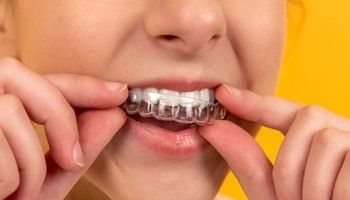

Periodontology (Gingival Diseases)
The department deals with gingival diseases that are first manifested by gingival bleeding and progress to loosening of tooth followed by teeth loses and surgical or non-surgical treatments thereof.
It is a department of dentistry which examines clinical and microscopic structure of solid and soft tissues that surround teeth, diagnoses conditions of those tissues and manages thereof, along with maintenance of post-therapeutic health. Clinic symptoms of gingival diseases are as follows: gingival bleeding; red, edematous and tender gums; gums easily detached from teeth; loose and mobile teeth; and chronic bad breath. Sometimes, better oral care alone or professional dental scale can be sufficient to manage those symptoms.
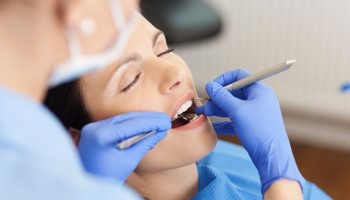
Endodontics (Root Canal Treatment)
Canal treatment implies removal of inflammatory or dead dental pulp that causes toothache, abscess and cyst formation from root canals and completely filling the resultant space with a non-hazardous, tissue-friendly substance.
The dental “pulp” is the part of tooth, where neurovascular bundle – a layer that ensures viability of tooth – is located beneath enamel and dentin layers. This compartment is referred as “pulp chamber” on the crown and it extends down to root of tooth. If the pulp gets inflamed due to a reason whatsoever, dental pulp is removed and canals should be cleaned and filled.

General Anesthesia and Sedation
General anesthesia, which implies transient loss of consciousness, is used in dental treatments for children with anxiety and dental phobia, adults with low threshold of pain and concerns about tooth and mentally and physically disabled children and adults.
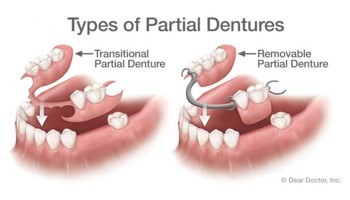
Prosthesis (total/partial)
Deteriorated, diminished; It is also in a way to predict the missing parts of the teeth or more missing materials and missing tissues, in order to restore function, aesthetics, transition and health. Removable dentures, full dentures, fixed dentures, crowns, inlay fillings, dentures on implants, dentures, prostheses are dental treatment methods.
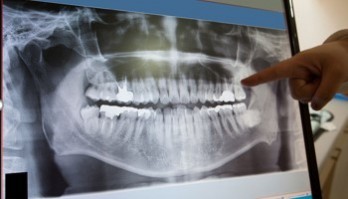
Dental Radiology
Dental radiology is required in order to make diagnosis and determine the treatment period for dental conditions. Use of digital system improves image quality and remarkably reduces dose of radiation the patient is exposed.
Radiography plays a significant role in dental and oral health. Dental radiography can easily identify caries, bone losses and problems in root canal that can be missed in dental examination. Moreover, radiographs help dentists in orthodontic therapy and implants.

Composite Fillings
Composite fillings, also known as COMPOSITE RESTORATIONS, are generally used in our teeth; It can be defined as the process of completing the missing tissues of the tooth with suitable materials in the color and structure suitable for the original after the material losses occur as a result of factors such as caries, abrasions, fractures. The process should be able to fully imitate our natural tooth shape... After all, one of the most important elements of using composites is that it is aesthetic and that the AMALGAM material used in the past has reached....
It provides a great advantage especially in our anterior teeth... But of course, like every material, composites also have some tricks and details... You can be sure of the durability of the composites if the usage and application procedures are fully followed.
Even today, customized composites have been produced for the anterior and posterior (chewing zone) zones... Composites with increased polishability in the anterior zone and increased pressure resistance in the posterior zone can be preferred...
In addition, in anterior region aesthetics, tooth shape and discoloration can be corrected with special aesthetic composites with single-session clinical applications without any abrasion or cutting (preparation) operation on the teeth.
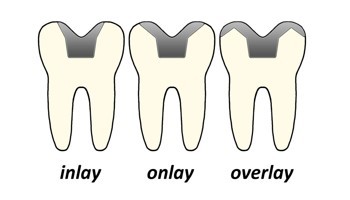
Partial Crowns
This restorative dentistry practice, also known as partial crowns, is one of the conservative treatment methods for patients who want to repair the loss of substance in the teeth. Inlays can be an alternative to traditional metal or composite fillings, while Onlays can repair more extensive damage to teeth.
What is the Difference Between Inley and Onley?
While inlays are an alternative to composite or amalgam fillings for less material losses, alternatives can be applied to treatments with 2 or more material losses in the tooth walls.
Onlays are applied to treat large material losses. Unlike inlays, Onlays are used on the bite surface. Like the inlay, the onlay can be designed from ceramic, gold or composite resins, the materials used in the inlays and onlays are produced and designed to be resistant to chewing force.

Tooth Whitening
Tooth shade is very important for individuals in terms of dental esthetics. In some cases, ideal tooth color cannot be obtained even with professional cleaning procedures, such as scaling and polishing, which are performed to remove teeth stains and tartar. In this case, color of tooth can be restored to the desired shade with a correct whitening procedure. Studies show that tooth whitening is extremely effective and reliable if it is performed under supervision of a dentist. Teeth and gum are no means damaged. Bleaching is a cosmetic solution that implies eliminating color organic and inorganic materials, which deposit in porous enamel on surface of teeth, using tooth whitening gels. Whitening technique involves applying a specially prepared gel on teeth and accelerating the reaction with a light source or a laser source. Mechanism of whitening process is in form of oxidation-reduction reaction. Materials used for this purpose release oxygen. The substances that cause discoloration of teeth are replaced by colorless ones, resulting with whitening.
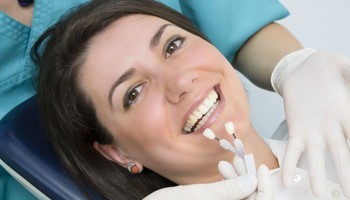
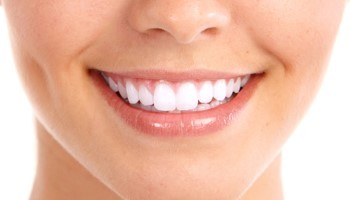
Laminate Porcelain
Laminate veneers are a fast and virtual form used in esthetics on anterior teeth. Laminate veneers are for a small number of dentistry prices in special anterior teeth, as a complete alternative, in enamel defects, dentition, diestema, malpositioned and worn teeth and especially in the older youth of pulp pupils. They are made in the environment and are made of composite laboratory material. Porcelain Laminate veneers are adhered to the tooth with resin cement.
Composite Laminate Veneers, on the other hand, are veneers created by dentists with special composites on the outer surfaces of the anterior teeth. The effects to be created using colors can be made more.

Implant Treatment
Implants are artificial tooth roots that are placed into your jaw bone to regain functions and aesthetic appearance of missing teeth. Implants are commonly bio-compatible and extremely endurable. Appearance and utilization of implants are very comfortable; their presence in the mouth cannot be even felt.
Advantages of implant treatments: It is not necessary to sacrifice adjoining teeth for tooth restorations in patients with a single missing tooth and outcomes are more aesthetic and functional. Patients who lost some of their teeth in the upper or lower jaw have to make healthy teeth cut for a bridge restoration. If patient complains of poor chewing function or dent secondary to mobility of prosthesis, which is used for total edentation or if sense of taste is negatively influenced by upper jaw prosthesis as palate is covered, implant treatment will eliminate such problems, since prostheses that are most closely resembling function and appearance of natural teeth will be produced.

Oral Hygiene and Methods
Proper tooth brushing is very important to remove dental plaque and food residues from inner, outer and molar surfaces of teeth. Tooth decays and gingival diseases can be prevented only with continuous and proper oral care. Patients are informed about oral hygiene by your dentists during dental examination or surgery.
Brush your teeth twice, once after breakfast in the morning and once before going to bed at night, for at least three minutes with recommended method. Use dental floss or interdental cleaners to remove the dental plaque in interproximal region and any other area, where toothbrush cannot easily reach. Brush your teeth with a fluoride tooth paste. Have a healthy and balanced diet. Get dental examination regularly or at semi-annular intervals in minimum.

Treatment of Dental Caries
Dental plaques in the mouth that are formed by bacteria produce acid with the help of sugary foods. Those acids decompose and deteriorate the enamel tissue and cause the onset of dental caries and further formation of cavities.
Dental caries can easily be recognized, thanks to dark discoloration and cavities. However, decay cavity can sometimes remain unnoticed and dentists can make a diagnosis only with the help of diagnostic tools (such as dental x-ray). Dental caries can sometimes be seen at junction of dental tubercles or in neck of tooth (collum). Or sometimes, decays hidden in interdental area can be unnoticed for a long time. The chief symptom of tooth decay is pain that requires presentation of patient to a dentist. Pain is provoked by cold, hot, sweet and sour foods. Severity of pain shows interpersonal variation, and pain disappears when causative factor is eliminated. However, pain can turn into a chronic form, if tooth decay is left untreated. Additionally, bad breath can also be an alarming sign of tooth decays.
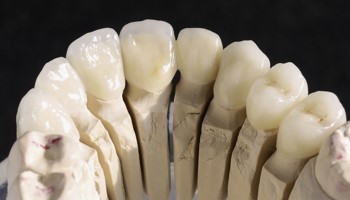
Zirconia Abutment
Recently, the role of esthetics in dentistry is ever increasing. Emergence of new technologies prioritized aesthetic procedures. Porcelain crown on metallic support, which has been used for a long time, is now being replaced by zirconium-based porcelains.
Zirconia crowns are superior to old-style metallic crowns in aesthetic terms due to the ability to transmit light.
Moreover, zirconium restorations are in good harmony with gingiva. In zirconium abutments, zirconium, a white alloy, is used instead of a metallic material. Zirconia abutments are natural and esthetic enough to be used in anterior teeth.

Fluoride Varnish
Fluoride is an element that reinforces dental structure and increases resistance against tooth decays. Today, fluoride varnish is divided into two groups; systemic and topical. Topical procedure involves applying gel, foam or varnish on teeth in clinical environment. Toothpastes and daily mouth washes used at homes are examples of topical procedure.
In systemic implementation, person takes this element directly into body by consuming fluoride-containing foods, such as milk, table salt or drinking water, or using fluoride tablets. However, it is scientifically proved that direct implementation on teeth in clinical environment yields more effective results.
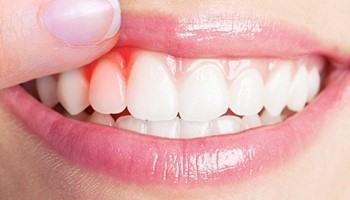
Treatment of Gum Diseases
Periodontal diseases are inflammatory conditions that affect gums and supportive tissue of teeth. Periodontal diseases account for 70% of teeth losses in adults. These diseases can be easily and successfully treated, if they are diagnosed at early stage. Prevention and treatment of gum diseases are accompanied by other benefits, such as protection of natural teeth, comfortable chewing and better digestion.
Gingivitis – inflammation of gingiva – is the first stage of periodontal diseases. This clinical picture is characterized with hemorrhagic, red and hypertrophic gums. It may not be seriously disturbing at the early stage. However, it can progress to periodontitis and cause an irreversible damage in gums and alveolar bone that supports the teeth.
Periodontitis is the advanced stage of periodontal diseases. Alveolar bone and other tissues that support teeth are damaged. A “periodontal pocket” occurs between the tooth and the gum. Presence of the periodontal pocket eases settlement of the infection and progression of the disease. Teeth get loosen or even extraction may be required when the disease progresses.
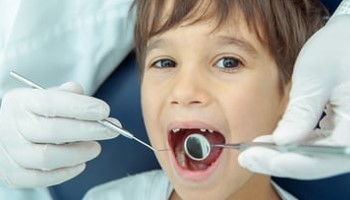
Fissure Sealant
It is a liquid restoration material, which seals deep fissures that poses risk of decay on chewing surfaces of permanent teeth and prevents penetration of bacteria into those holes, resulting dental caries prevention.
Fissure sealants are transparent or white liquid substances, similar to composite restoration materials, which are applied on fissures on teeth at the back of the mouth. They prevent tooth decay by adhering to the enamel.
Since they are in liquid form, they penetrate deeply into fissures on surface of tooth and they are, therefore, applied with no need to abrasive procedure and they do not cause abnormally high lining on tooth surface.


